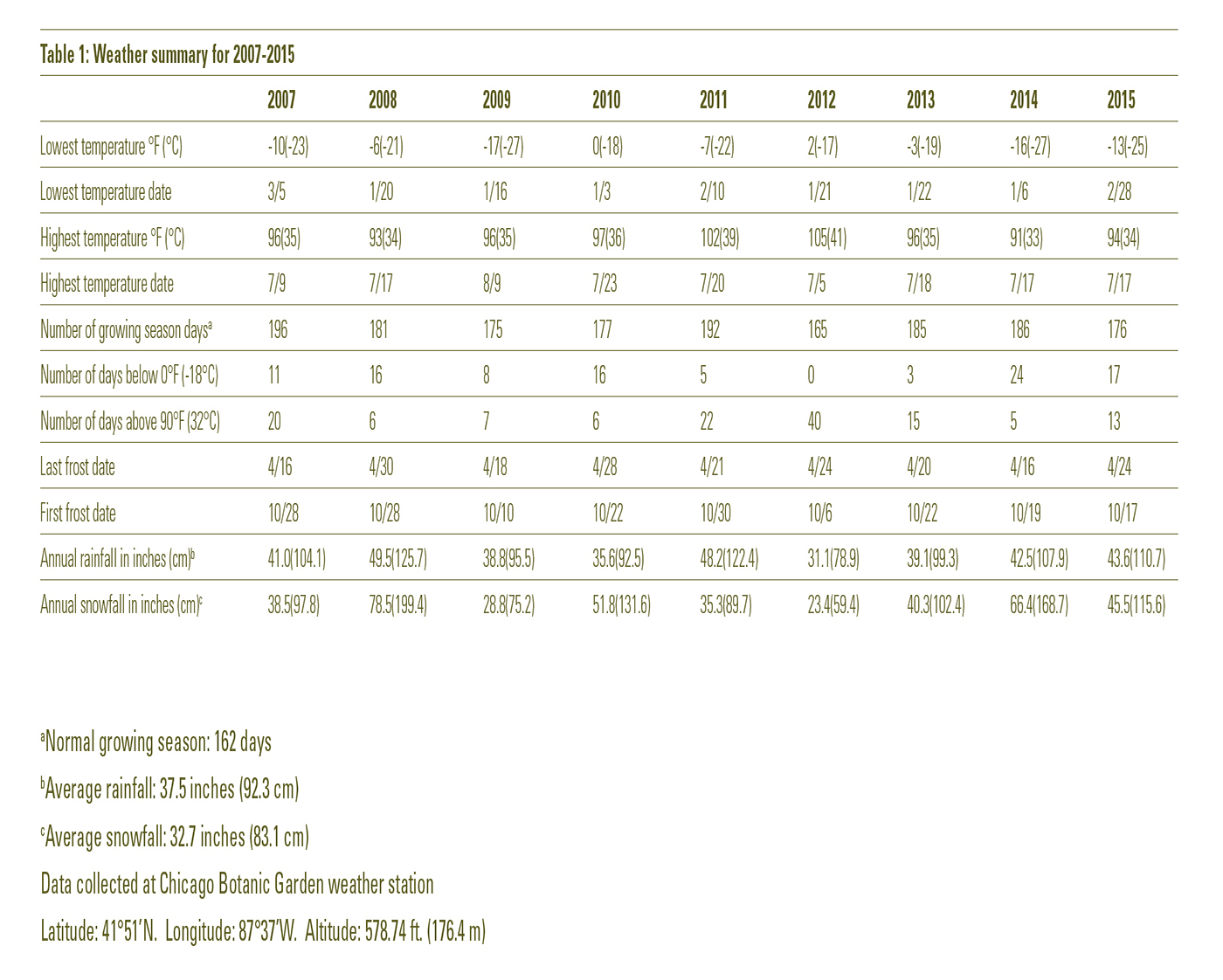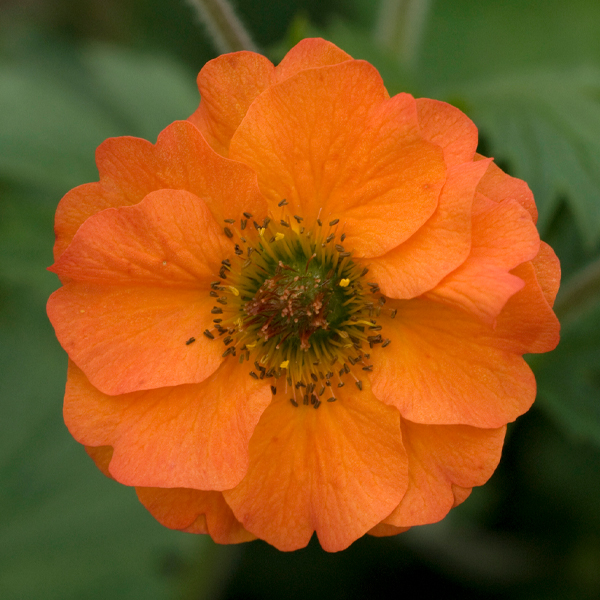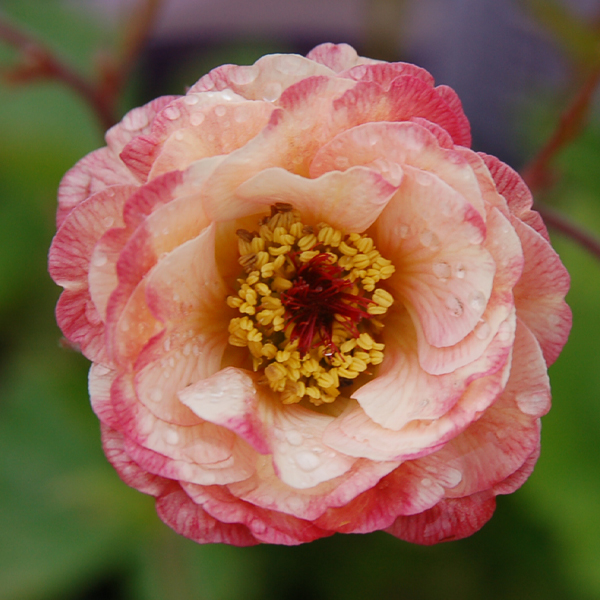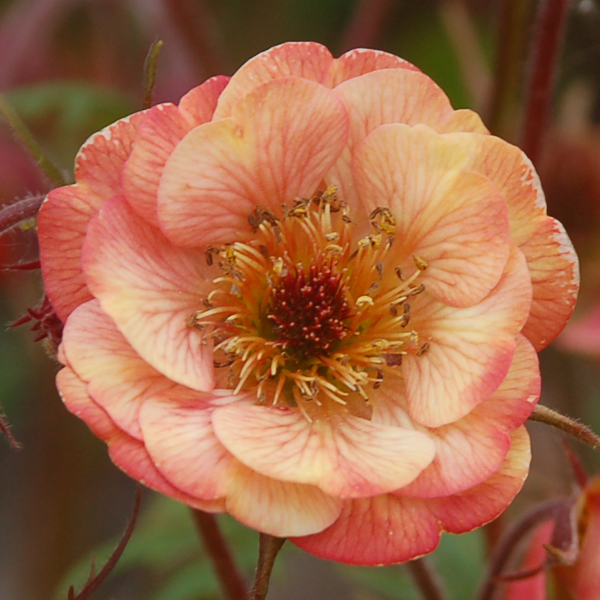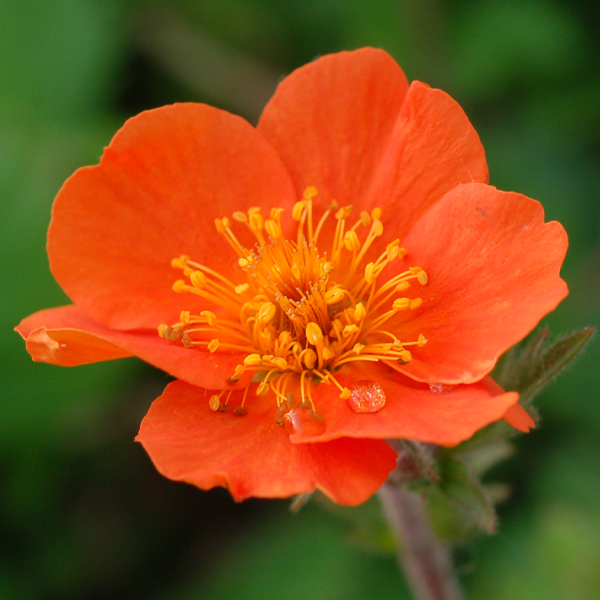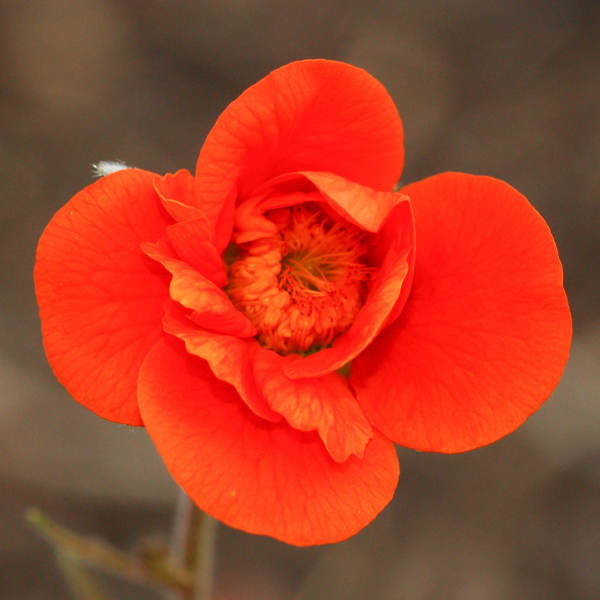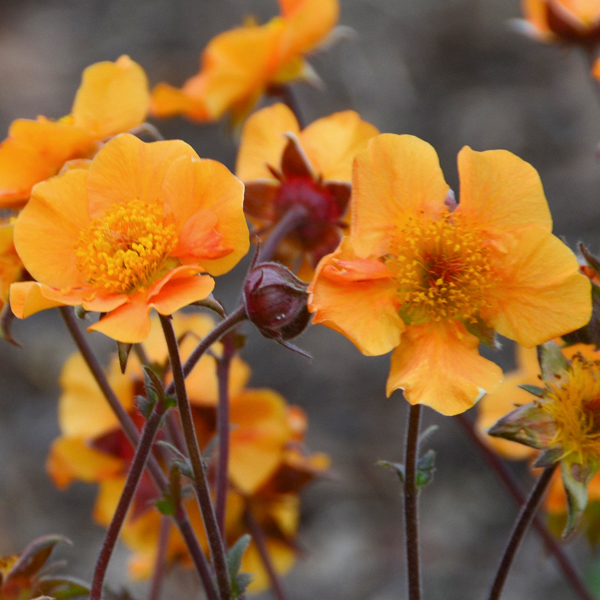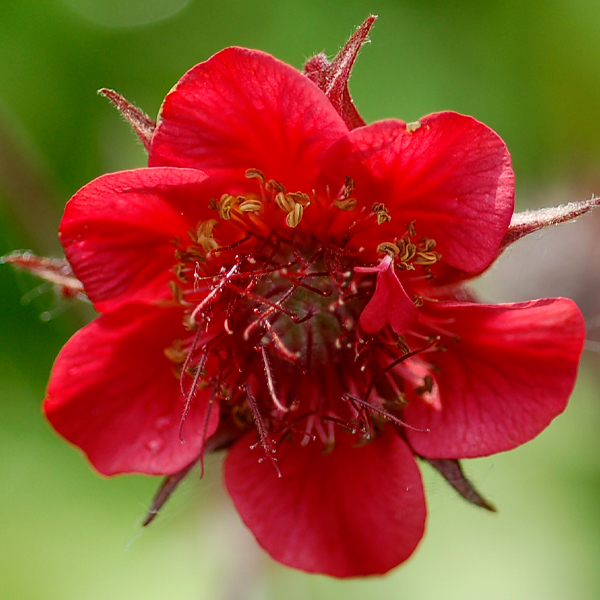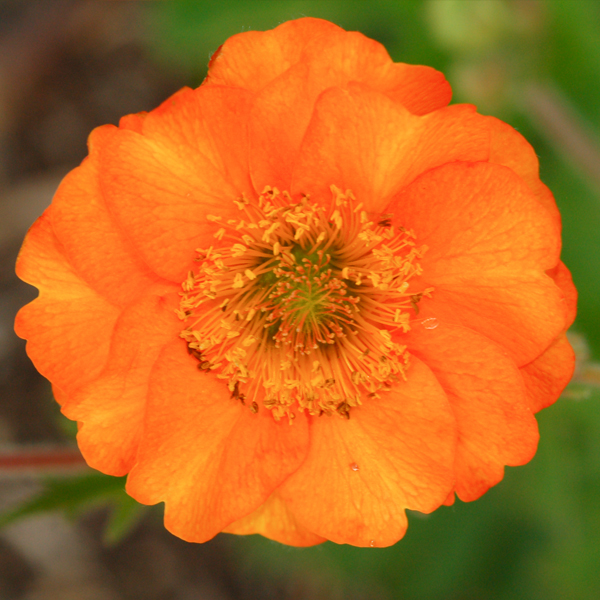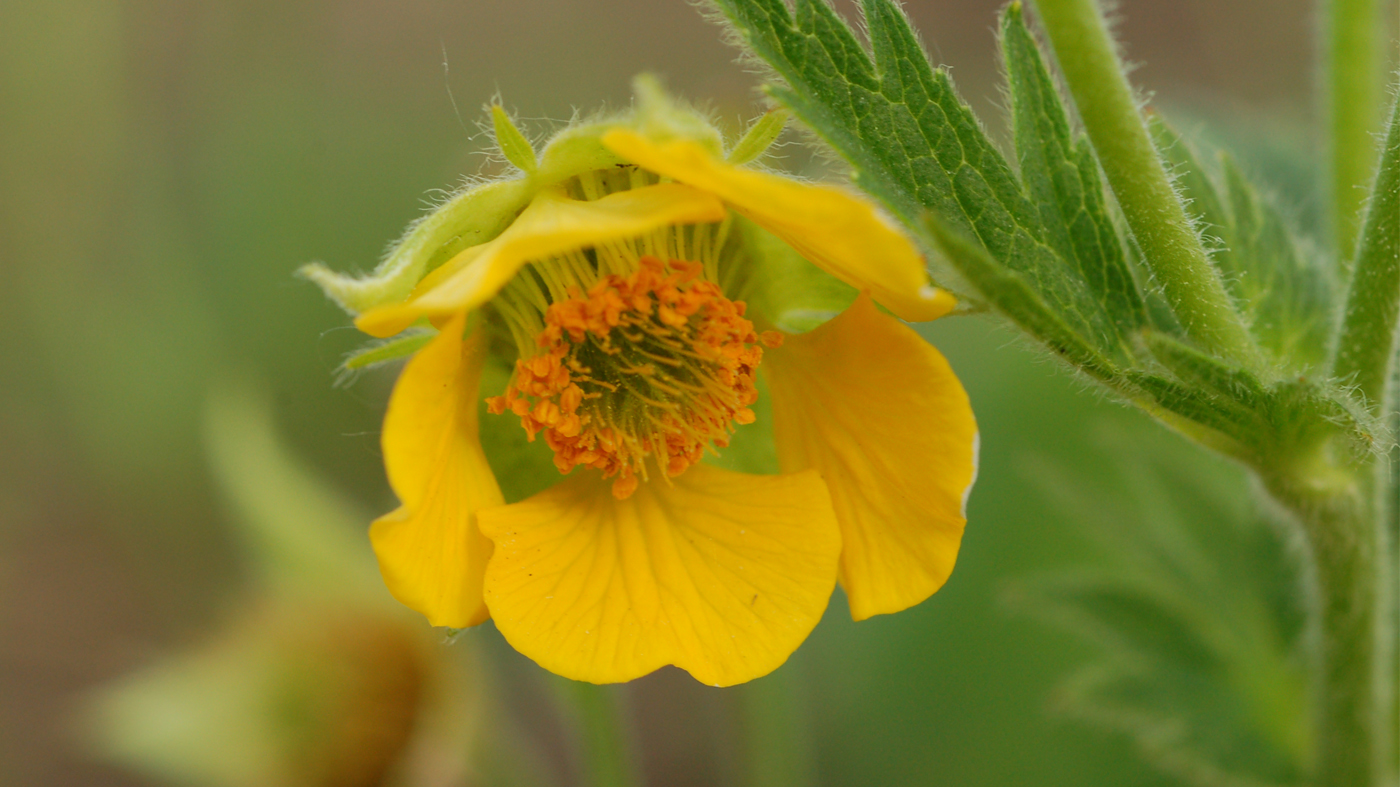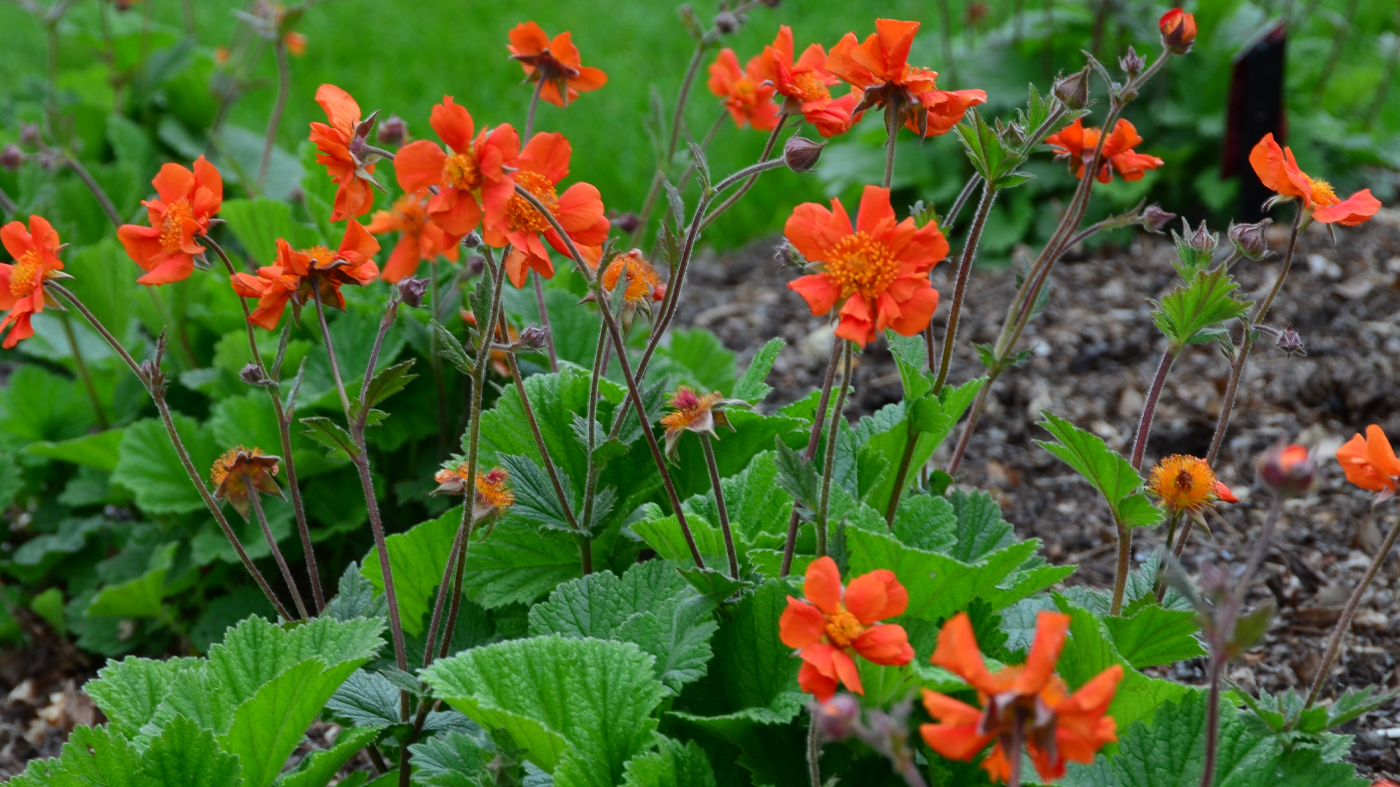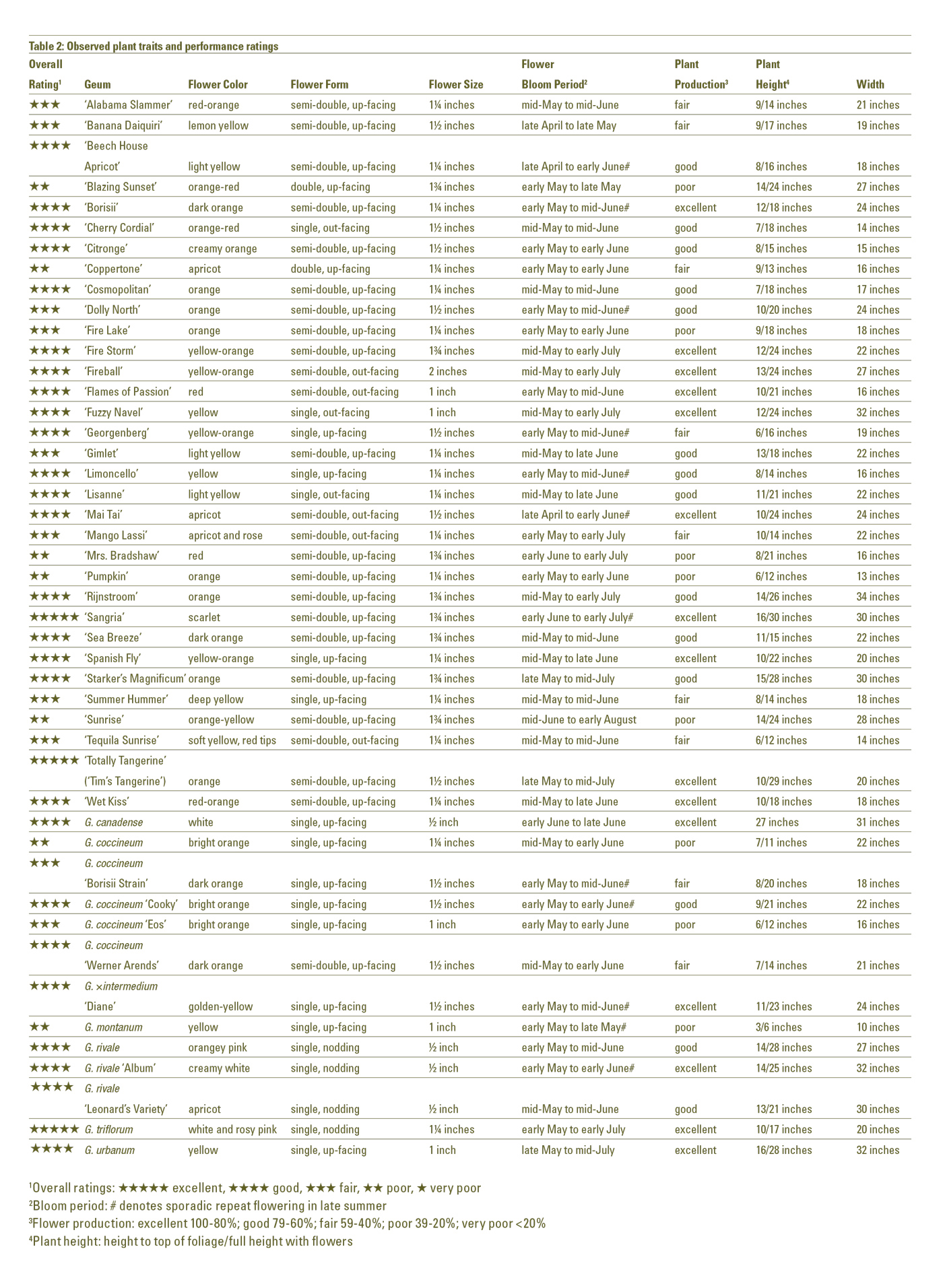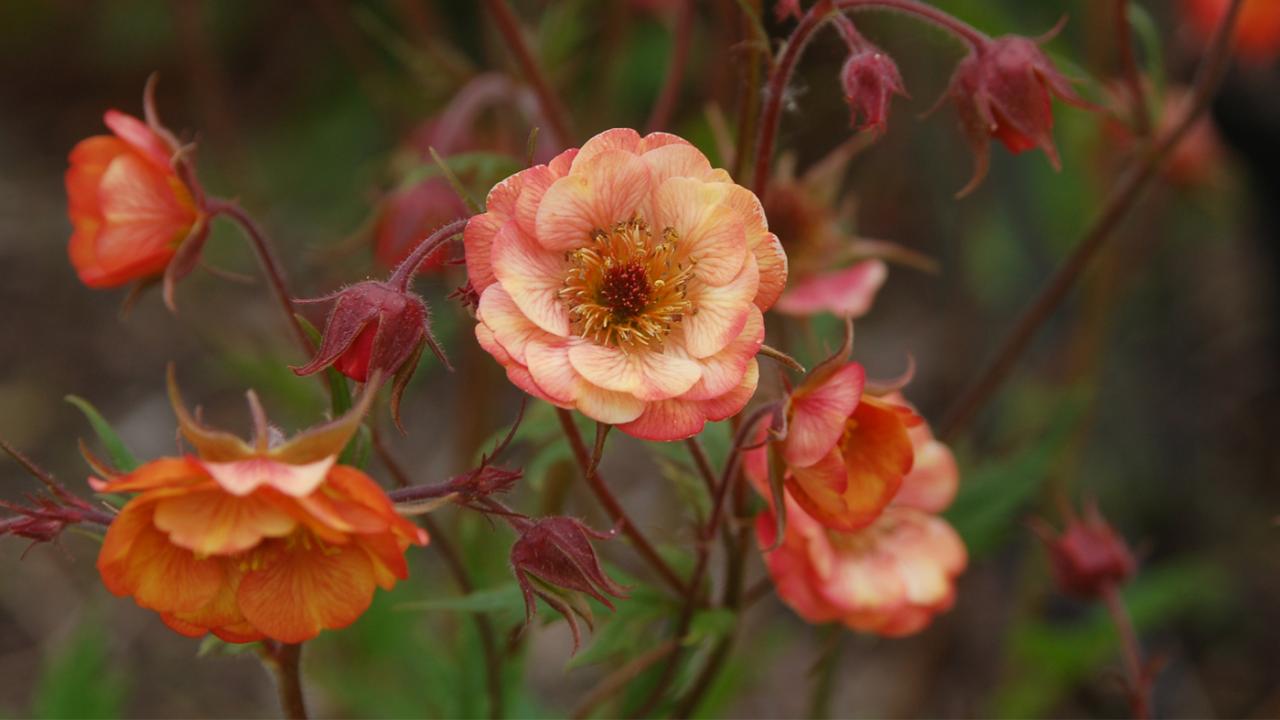

A Comparative Evaluation Study of Geum spp.
A Comparative Evaluation Study of Geum spp. | Issue 41 2017
Richard G. Hawke, Plant Evaluation Manager and Associate Scientist

Geum triflorum
Avens (Geum spp.) are certainly not counted among the most common perennials, despite having been cultivated in gardens for many years. Evocative of miniature roses, their brightly colored flowers bloom freely for many weeks in late spring and early summer. Avens are without doubt extroverted perennials—Graham Stuart Thomas fittingly proclaimed avens to be “one of the gayest of early summer plants.” And yet, avens have been uncommon in contemporary gardens until recently.
Avens in Great Britain far surpass what’s commercially available in the United States based on a review of the Royal Horticultural Society’s online plant finder and the University of Minnesota Libraries’ Plant Information Online. Developments in plant breeding and selection has drawn these lovely and tough perennials out of obscurity. Much of the enhancements to avens in the past few years can be attributed to Brent Horvath, plant breeder and owner of Intrinsic Perennial Gardens in Hebron, Illinois. His Geum Cocktails Series™ has reimagined avens, offering gardeners a variety of flower colors ranging from soft pastels to fiery tones of red, orange, and yellow. As gardeners discover or rediscover avens, they will find that the offerings are greater than ever before.
It’s not surprising that the single to semidouble flowers resemble small roses, since Geum is in the rose family (Rosaceae). Single flowers are saucer-shaped with five broad, showy petals and a central boss of stamens; whereas, semi-double flowers possess many more petals and fewer stamens. Red, orange, and yellow are the standard flower colors, but color intensity ranges from soft to deeply saturated, and may be blushed with other colors or bicolored, too. The flowers are held above the foliage on wiry stems and each blossom may be up-, out-, or down-facing depending on the species or cultivar. While the majority of avens show off their petals, the nodding flowers of water avens (G. rivale) and prairie smoke (G. triflorum), hide their understated corollas within cup-shaped coronal bracts. The feathery plumes of ripening fruit aid in seed dispersal but can also be exceptionally ornamental as in the case of the ethereal prairie smoke.
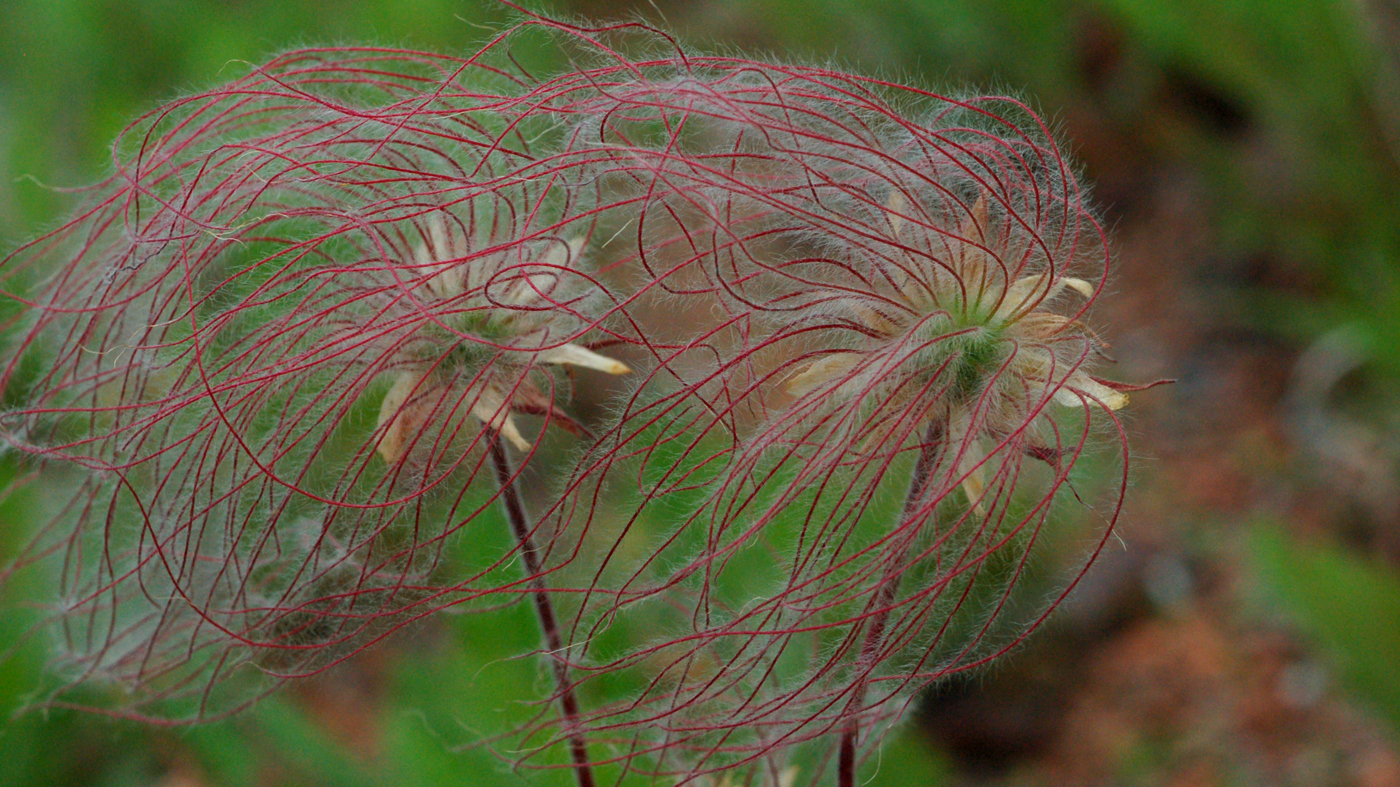
Geum triflorum
Avens form rosettes of large hairy green leaves, which are comprised of a prominent terminal lobe above pinnately arranged pairs of smaller leaflets. The true leaf form and size is often masked since only the large terminal lobes show, while the small lateral leaflets are well hidden within the congested crowns and are often misshapen. Due to the hybrid nature of many cultivars, foliar shapes can be highly variable, thereby making taxonomic verification challenging. Leaves may be evergreen to semi-evergreen in mild winters. Their foliar mounds range from six inches to a foot or so tall without flowers; flowers are held above the plants on branched or unbranched leafy stems. Avens have clumping to rhizomatous growth forms.
There are about 50 species of Geum indigenous to cool regions in Europe, Asia, Africa, and the Americas, although only a handful of species are commonly cultivated. Many species, such as Chilean avens (G. chiloense) and scarlet avens (G. coccineum), grow naturally in moist, rich soils in meadows or woods; whereas prairie smoke (G. triflorum) is native to dry prairies and rocky places. Avens generally prefer moist, well-drained soils in full sun to light shade but do not like wet winter soils. They flourish in full sun gardens in cooler zones if ample water is provided but will appreciate afternoon shade in hot and humid climates. Avens are generally hardy in USDA hardiness zones 3-9.
From a gardening standpoint, avens are easy to grow and require minimal maintenance. However, leaves may turn brown in hot, droughty conditions. The dead leaves can be removed to improve the display, but new leaves will eventually sprout and cover up the brown foliage too. Additionally, under these conditions, leaves can become scorched, which increases their susceptibility to spider mites. Avens may also be troubled by powdery mildew, downy mildew, fungal leaf spots, aster yellows, and nematodes. Some avens species and hybrids are short-lived, for example, Geum chiloense and G. coccineum. Given this trait, crown division annually or every other year is recommended to keep plants healthy and vigorous. Deadheading encourages repeat bloom in late summer, improves the bedraggled appearance that sometimes occurs after flowering, and reduces the potential for reseeding. Avens can reseed freely and hybridize readily. Some common cultivars such as ‘Mrs. Bradshaw’ and ‘Lady Stratheden’ are seed-grown, but not all cultivars grown from seed will be true to type.
Avens are perfectly sized for the front of the perennial border, as a single specimen or in groups. They are great companions for a variety of perennials and grasses such as cranesbills (Geranium spp.), sages (Salvia spp.), catmints (Nepeta spp.), coral bells (Heuchera spp.), prairie dropseed (Sporobolus heterolepis), and little bluestem (Schizachyrium scoparium). Brightly colored avens are nicely paired with other strong colors—deep blues and purples are particularly enticing companions to fiery oranges and reds. Avens are also good in naturalized landscapes and container plantings, and in the case of prairie smoke (Geum triflorum), in rockeries, gravel gardens, and green roofs. The wild look of white avens (G. canadense) and herb bennet (G. urbanum) work best in naturalized landscapes.
List of Sections
The Evaluation Study
The Performance Report
Summary
References
Armitage, A.M. 2008. Herbaceous Perennial Plants, Third Edition. Champaign, IL: Stipes Publishing L.L.C.
Phillips, E. and C.C. Burrell. 2004. Rodale’s Illustrated Encyclopedia of Perennials. Emmaus, PA: Rodale Inc.
Rice, G., editor-in-chief. 2006. American Horticultural Society Encyclopedia of Perennials. New York, NY: DK Publishing, Inc.
Thomas, G.S. 1990. Perennial Garden Plants or The Modern Florilegium. Portland, OR: Sagapress, Inc./Timber Press, Inc.
The Plant Evaluation Program is supported by the Woman’s Board of the Chicago Horticultural Society and the Searle Research Endowment.
Plant Evaluation Notes© are periodic publications of the Chicago Botanic Garden.
The Chicago Botanic Garden is one of the treasures of the Forest Preserves of Cook County.
Photographs by Christine Whitacre and Brent Horvath unless otherwise noted


